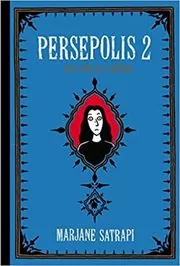Cat's Eye Summary
Author: Margaret Atwood
This page offers our Cat's Eye summary (Margaret Atwood's book). It opens with an overview of the book, and follows with a concise chapter-by-chapter summary.
Drafted with AI assistance and reviewed by a human editor.
As an Amazon Associate, we earn from qualifying purchases (at no extra cost to you).
Overview
Renowned artist Elaine Risley revisits her childhood city of Toronto for an art show, prompting her to reminisce about her past. As a child, her family had to move frequently due to her father's work as an entomologist. Upon settling in Toronto when she's eight, Elaine grapples with the complexities of female friendships and the unspoken rules of girlhood. She befriends three girls: Carol, Grace, and Cordelia, who eventually becomes a tormentor rather than a friend. The bullying intensifies when Cordelia throws Elaine's hat into a ravine, causing Elaine to nearly freeze in the icy river while retrieving it. A hallucination of the Virgin Mary helps her gather the will to leave the ravine and, upon returning to school, she dismisses Cordelia's provocations, making new friends, and suppressing those traumatic memories.
Elaine and Cordelia go to the same high school where Elaine flourishes and Cordelia falters. Elaine becomes an achiever with a mean streak, shunning Cordelia who leaves school for failing too many subjects. Elaine pursues her passion for art, taking classes while in university, and starts relationships with her teacher and classmate, Jon. When Cordelia reappears, seeming more stable and successful, Elaine feels a pang of envy and decides to cut Cordelia off for good. Elaine later chooses Jon, marries him after getting pregnant, and continues to paint. She connects with a group of women artists who showcase her work, inadvertently kickstarting her career. Cordelia's suicide attempt and plea for help falls on deaf ears as Elaine focuses on her deteriorating relationship, resulting in her moving to Vancouver and marrying Ben.
In present times, Elaine roams Toronto, feeling displaced by its transformation. Her art exhibition brings forth old emotions, especially her resentment towards Cordelia who doesn't show up at the event. The disappointment leads Elaine to revisit the ravine from her childhood, where she imagines seeing a young Cordelia. She acknowledges their shared feelings of fear and loneliness, offering her childhood tormentor the same advice she received years ago - to go home. Her journey ends with a beautiful moment of witnessing elderly women playing cards during her flight, making Elaine miss an old age she would never experience with Cordelia.
Edited by
Software engineer whose passion for tracking book recommendations from podcasts inspired the creation of MRB.
Lead investor at 3one4 Capital whose startup expertise and love for books helped shaped MRB and its growth.







Comments
Did we miss something? Have feedback?
Help us improve this page by sharing your thoughts